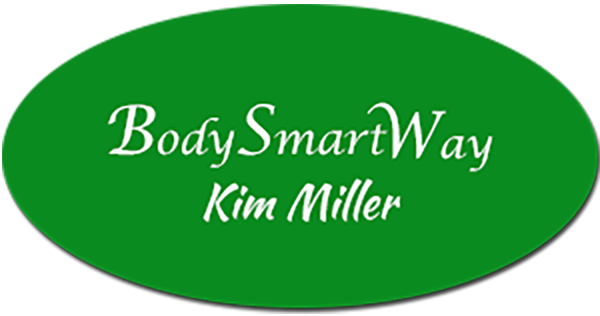by Kim Miller | Jun 16, 2016 | Getting Back into Shape/Health, Uncategorized

How it Starts
Do you believe that walking doesn’t work for you? Do you think that walking doesn’t count as exercise? Think about this.
Myth: Walking Doesn’t Work For Me
Truth: Walking has been proven to be an effective way of managing a healthy weight, achieving performance goals, releasing stress, and improving overall health.
There are a variety of reasons why someone might feel like walking doesn’t work. Novice exercisers often become frustrated if they don’t immediately achieve results; many fitness programs promote false-hope promises like losing 10 pounds in 30 days simply from walking. And sometimes people enter into a walking routine with great intentions but start too hard, too quickly, and burn out and or get injured.
In my practice of health coaching and healthy living, I like to meet people where they are at. Often where they are at is searching for an activity that they enjoy. Walking is a go to for many people who want to just feel healthy. I encourage walking but recommend the following tips.
5 Tips
1. Do not expect to lose 10 pounds in 30 days by increasing your walking/exercise. On the other hand most people who are even moderately overweight can expect to lose 10 pounds in 30 days if they change what they eat. If feeling healthy is your main focus, get out there and move, but if weight loss is your main focus, change what you eat, and exercise yes, but do not think you will exercise your body to a lean body weight without also changing your other habits.
2. Increase your walking time and or distance incrementally. A consequence of not being smart about exercising progressively is that the body tends to break down when it is ill prepared. Though you can ” walk all day and it feels easy” it may not actually be easy on your body. So many people are injured prematurely because “it feels easy and my body should be able to do this” mentality. Don’t let this be you. Incorporate long and short walk days mixed in with thoughtful mileage or time goals for each week as you progress.
3. Stretch all the key muscle groups after long walks. Walking on flat surfaces increases endurance in the muscles especially in the back of the body: calves, hamstrings, and lower back, and hip flexor muscles. You should stretch these muscle groups once a day and right after you walk preferably. If you are climbing hills, then the quadriceps/ front of the upper thighs, as well as the gluteal muscles are also engaged. They should be stretched as well.
4. You should size yourself up with a good running/walking shoe. Research is changing and the old days of sizing up your feet for shoes based on whether you are a pronator striker ( feet and ankles tend to rotate inward on impact), supinator striker ( feet tend to bend outward on impact), or neutral striker ( feet tend to strike evenly) are gone. Best advice: choose a comfortable shoe that feels great. Walk around in the store with the shoes on and make sure it fits and feels great. Don´t buy something you feel you need to ´break in´.
5. Go into your walking routine with a lifestyle change mindset. Often in the beginning of forming new habits it takes a while to get into the flow of simplicity and healthy living, but as you continue on with your new challenge things start changing inside of you. We can’t force this change inside of us, we just have to, as one client says, trust that you’re going to feel better and begin to look forward to getting out and walking and or exercising. I love this thinking. We can’t force things. We just have to trust that all is going to be fine and that soon walking/walk running/ running or whatever it is you are working on is going to soon feel fine.
by Kim Miller | Feb 15, 2016 | Getting Back into Shape/Health, Perspectives in Aging Well, Uncategorized
5 Must Do Hip Exercises That Ease Pain and Prevent Injury
Breaking out of a Routine
Often, I talk with my clients about how breaking out of a regular daily routine can help someone realize how out of shape they are. For example, taking a ski day after months of working non-stop without much exercise, or taking up tennis after a 5 year lapse.
This weeks tips are exercises you can do so that when you do finally break out of your normal work- life routine, you can be ready to ski the slopes with abandon, tee off on your golf game, run sprints around your friends, or serve with reckless abandon to your opponent on the other side of the tennis court!
It’s all about being flexible and strong in all the muscle groups of our bodies. Today we focus on the hips.
Why Hip Stretches are So Important
The hip is the largest joint in the human body. It supports most of the body’s weight and is key to maintaining balance. Because the hip joint and hip region are so crucial to movement, arthritis and bursitis in the area can be especially painful.
Chronic hip pain is more prevalent as the body ages, but there are various exercises and lifestyle changes you can introduce to treat painful and or weak hips. Follow these steps to help prevent and reduce hip pain and importantly to keep you limber and strong for those times you want to cycle out of the box and play hard.

Hip Flexor Stretch:

Get into proposal position with your right knee on the floor and the left leg bent at a 90-degree angle with your hands on your hips. Place a firm cushion—such as a Bosu ball, that’s found at most gyms, or a stack of towels—underneath the right knee. Engage your abdominal and butt muscles and tuck your pelvis slightly and press forward through your hips. “You’ll immediately feel a stretch in the front of your right hip. Gently glide forward and back 5 times, alternating deepening and easing off the stretch. Do 5 reps. Switch legs and repeat.
Hip Flexor Stretch:

Remain in the same proposal position with your right knee on the floor, your left leg bent at a 90-degree angle and your pelvis pressed forward to stretch the front of the hip. Reach your right arm up to ceiling. Bend your spine slightly to the left. Straighten to return to center. Do 5 reps. Then switch legs and arms.
Hip Flexor Stretch:

Go back to proposal position with your right knee on the floor and your left leg bent at a 90-degree angle with your hands at your hips. Draw a circle with your hips, counterclockwise 5 times and then clockwise 5 times.
Glute Bridge

Lie on your back with your knees bent and feet flat on the floor. Place your feet close to your butt. Engage your abs, which will flatten your low back to the floor and tilt your pelvis slightly. Pressing your heels into the floor, lift your butt, followed by your lower back and then your mid-back up as if you were peeling them off the floor. Lift until your thighs are parallel with the floor, keeping your shoulders, hips and knees in line. Keep your abs engaged throughout the lift. Slowly lower back down the floor in reverse order (your mid-back, then lower back and finally, your rear). Do 10 reps.
Pigeon Pose

Go into a downward dog pose. Extend your right leg high in the air behind you, and then bring your right knee forward to rest near the right edge of your yoga mat. Take your left leg straight back behind you and level your hips. Hold for 15 breaths.
Next Week check your inboxes on Wednesday. Don’t forget the Lose Your Waist Wednesday edition is jam packed with ways to help you reduce that dreaded middle.
Congratulations to January’s 30 Days to Lean Members.
24 members lost 224 pounds. Best part: healthy, happy, and on their way to continuing to do what they want to do for a long- long time!
Congratulations to both Ph I and PH II 30 Days to Lean Members who are continuing to lose lots of weight! Details at the beginning of next month, so stay tuned these members are getting healthier and leaner by the day! You can too!rckuhns
Next Lean: March 7th.
All My Best,
Kim






